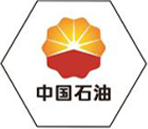
Sep . 15, 2024 10:39
Back to list
pressure reduction skid
Understanding Pressure Reduction Skids An Essential Component in Process Industries
In various industrial applications, the management of pressure is crucial for ensuring operational efficiency and safety. One of the key devices employed to control and reduce pressure is the pressure reduction skid. These skids play an essential role in numerous industries, including oil and gas, chemical manufacturing, and water treatment, providing automated solutions that enhance productivity and mitigate risks associated with high-pressure systems.
A pressure reduction skid is essentially a pre-fabricated modular unit that houses various components necessary for regulating pressure within a pipeline system. These units are designed to be easily transportable and can be readily installed at the site of operation. The skid typically includes pressure regulators, valves, gauges, and sometimes additional components like filters and control systems, all mounted on a robust frame.
The primary function of a pressure reduction skid is to lower the pressure of fluids (gas or liquid) before they are distributed to different systems for processing or consumption. In many cases, high-pressure gases or liquids can be hazardous, potentially leading to equipment failure, leaks, or dangerous explosions. By implementing a pressure reduction skid, operators can ensure that pressures remain within safe operational limits. This not only protects equipment and personnel but also enhances the overall reliability of the pipeline infrastructure.
pressure reduction skid

One of the significant advantages of using a pressure reduction skid is its flexibility. These skids can be customized to meet specific operational requirements, allowing companies to adapt to various fluid characteristics and pressure levels. Additionally, their modular design facilitates easy maintenance and upgrades. This adaptability is particularly valuable in industries where regulatory compliance and process optimization are paramount.
Furthermore, pressure reduction skids can be equipped with advanced monitoring and control systems. By integrating smart technology, operators can obtain real-time data on pressure levels and adjust settings remotely. This capability significantly improves response times to potential issues and enhances operational efficiency, enabling companies to operate their systems more effectively.
Another notable benefit of pressure reduction skids is their scalability. As a business grows or changes its operational focus, the skid can be modified or expanded to accommodate increased volumes or different types of products. This scalability is essential in today’s dynamic industrial landscape, where adaptability can determine a company’s success.
In conclusion, pressure reduction skids are vital components in managing pressure across a variety of industries. Their ability to maintain safe pressure levels, enhance operational efficiency, and provide flexibility and scalability makes them indispensable in modern industrial systems. As industries continue to advance, the role of pressure reduction skids will only become more critical, supporting the need for safe and efficient operations in an ever-evolving market.
Latest news
-
Safety Valve Spring-Loaded Design Overpressure ProtectionNewsJul.25,2025
-
Precision Voltage Regulator AC5 Accuracy Grade PerformanceNewsJul.25,2025
-
Natural Gas Pressure Regulating Skid Industrial Pipeline ApplicationsNewsJul.25,2025
-
Natural Gas Filter Stainless Steel Mesh Element DesignNewsJul.25,2025
-
Gas Pressure Regulator Valve Direct-Acting Spring-Loaded DesignNewsJul.25,2025
-
Decompression Equipment Multi-Stage Heat Exchange System DesignNewsJul.25,2025

